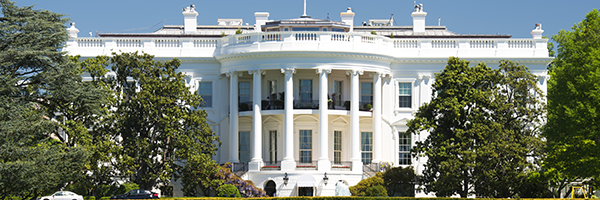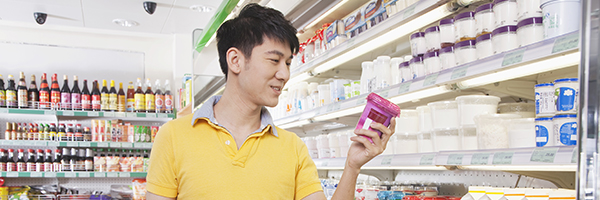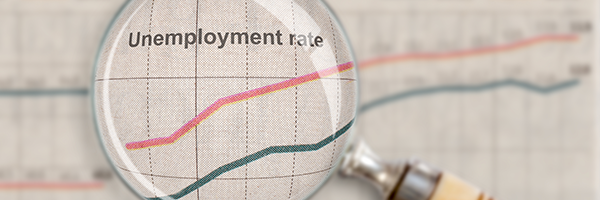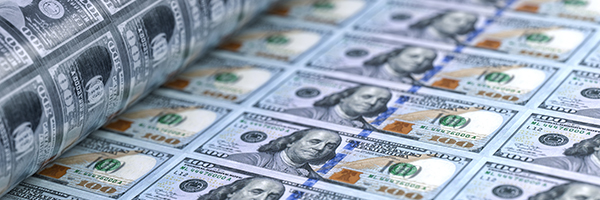 April 3, 2025
April 3, 2025
What You Need to Know Today:
Walmart cuts its forecast for 2025 after strong end to 2024
Walmart (WMT) forecast lower than expected profit for 2025. The company said it’s anticipating adjusted earnings of $2.50 to $2.60 per share, below the average projection of $2.74 a share by Wall Street analysts. As of noon New York time today Walmart shares were down 6.8% as the lower guidance outweighed strong results for the just concluded quarter. Both top and bottom lines came in higher than Wall Street expected in the retailer’s quarter and fiscal 2025. Quarterly revenue increased 5.3% year over year to $183 billion, while adjusted earnings per share were up 10% to 66 cents a share.

Saturday Night Quarterback says, For the week ahead expect…
Look for the the annual Santa Claus Rally this week. And if it doesn’t arrive, expect that to increase feelings of uncertainty on Wall Street as we begin 2025.

Government shutdown avoided–until March 14
From the Washington Post: President Joe Biden signed a congressional spending bill into law on Saturday morning, putting to bed the threat of a potential Christmastime government shutdown and kicking the issue for a new Congress and a new president to address in the spring.

Houses passes spending bill; now it’s up to the Senate
Tonight the House passed a spending bill to keep the government open. Th bill does not include President-elect Donald J. Trump’s demand to raise or suspend the debt ceiling. The legislation covers government funding, disaster relief and payments to farmers, but not the debt ceiling increase that Mr. Trump had insisted on. The debt ceiling issue caused a Republican revolt that sank a previous measure on Thursday.

Another vote in the House tonight
Speaker Mike Johnson (R-Louisiana) said Friday that the House would vote on a new spending plan without President-elect Donald Trump’s demand to suspend the debt limit. A vote is expected to take place after 5 p.m. Washington time.

Now posted: The full complete all-100-days version of my Special Report: Buys and sells–and other money moves for Trump’s first 100 days.
It’s taken a while–what with the distraction of another potential government shut down. BUT IT’S ALL NOW AVAILABLE. You can find the complete version under the Special Reports tab.

Special Report: 10 Penny Stock Home Runs–Pick #3 GWH
Special Report: 10 Penny Stock Home Runs Pick #3 ESS Tech (GWH). The stock of this maker of iron flow, utility scale, long-draw-down batteries ticks all the boxes for my Penny Stock Home Runs.
Live Market Report (20 minute delay)

Moderna shares jump today on positive results in skin cancer vaccine trials
Shares of Moderna (MRNA) closed up 925% today, December 14. A personalized vaccine developed by Merck and Moderna helped prevent the recurrence of severe skin cancer for three years, according to new results released today. Patients with severe melanomas who got the vaccine and Merck’s cancer drug Keytruda were 49% less likely to die or have their cancer return than those who got Keytruda alone. The news is especially important for Moderna.

The Fed catches up with the markets on interest rate cuts and stocks soar
Today, the Federal Reserve caught up with the financial markets. The Fed’s Open Market Committee kept interest rates steady at a benchmark 5.25% to 5.50%, as expected. And the Fed’s Dot Plot projections showed that the median projection expects three interest rate cuts in 2024. That’s a huge shift from the September Dot Plot and moves the Fed toward the current Wall Street hope for 4 cuts or more in 2024. The Dot Plot also projects that the unemployment rate would rise slightly next year, to 4.1%, from a recent 3.7% rate, and that inflation would continue to improve in 2024 but not reach the Fed’s 2% target. Stocks soared on the confirmation of the consensus hope. At the close, the Dow Jones Industrial Average jumped 512.3 points, or 1.4%, to a record high of 37,090.24. The S&P 500 index climbed 1.37%, and the Nasdaq 1.38%.

Special Report: 10 Great Growth Stocks that Are Getting Greater–today my 7th pick ASML
GREATER Growth Stock Pick #7: ASML Holding (ASML). ASML Holding is priced like a stock that owns 90% of the market for cutting edge photo lithography chip-making equipment. I want to own this stock as one of my 10 GREATER Growth Stocks, but I worry about paying that kind of multiple (35 times trading 12-month earnings per share), especially ahead of what is shaping up as a challenging 2024 for chip equipment makers in general and ASML in particular. But 2025 looks like a great year for chip equipment makers in general and ASML in particular. So timing is the key issue on buying this one.

Core CPI inflation numbers disappoint for November, illustrate why the Fed won’t rush to cut rates
If you follow the headline numbers (what’s known as All Urban Consumers) for the Consumer Price Index (CPI), you’d say, “See inflation continues to fall; the Federal Reserve will cut rates quickly in 2024.” But you’d be following the wrong CPI number.

Special Report: 10 Great Growth Stocks that Are Getting Greater–today my 6th pick Danaher
GREATER Growth Stock Pick #6: Danaher (DHR). Danaher is a smart (that’s key) serial acquirer–and asset divester–in the life sciences space. And that makes this stock very interesting in an environment where small, young life sciences companies might be looking for help/rescue/acquisition because they can’t raise capital in a tough part of the credit cycle. I like Danaher now, as well, because the stock looks to have just about completed its re-rating after a spike in sales during the Covid pandemic led to over enthusiasm about the stock.

China slips back into deflation in October–not a good sign for the global economy
China slipped back into deflation in October, according to government data released over the weekend. China had shown a recovery from August deflation in September readings, but that recovery now looks temporary. As worrying as the deflation tag itself is the cause: week domestic demand.

Saturday Night Quarterback says, For the week ahead expect…
Maybe. Must maybe. All eyes will be on the Federal Reserve meeting on December 13.

U.S. economy added stronger than expected 199,000 jobs in November
The U.S. economy added 199,000 jobs in November, the Labor Department reported today, Friday, November 8. The unemployment rate dropped to 3.7% from 3.9% in October That surprised economists who had expected the unemployment rate to hold steady. The bond market reacted in the morning hours after the report was released at 8:30 a.m. New York time by selling Treasuries. The yield on the 10-year Treasury gained 8 basis points to 4.233% as of 10 a.m. in New York as bond prices fell. The yield on the two-year Treasury jumped 78 basis points to 4.669%.

Today’s inventory report points to expected slower GDP growth for the fourth quarter
Ever since reports showed the U.S. economy grew at a 5.2% annualized rate in the third quarter, economists have been telling investors to expect lower growth in the fourth quarter. Some of that higher growth in the third quarter, they argued, was pulled from the fourth quarter.
Today’s report from the Commerce Department showing a 0.4% drop in wholesale inventories in October supports the economists’ argument.

Initial claims, continuing claims for unemployment show a modestly slower jobs market
It’s probably not enough to push the Federal Reserve to cut rates on the schedule that Wall Street is hoping for –with the first cut in March 2024–but it does make a “no increase in interest rates” result from the December 13 Fed meeting even more likely.

Special Report: 10 Great Growth Stocks that Are Getting Greater–My first 8 picks
Here are the first 8 picks for my GREATER Growth Stocks Special Report. More on the way.

Moody’s cuts China bond rating on worries over debt load
Moody’s Investors Service cut its outlook for Chinese sovereign bonds to negative from stable today, December 5. The rating company kept tws long-term rating on China’s government bonds at A1. You don’t have to be a forensic accountant to see what worries Moody’s.

Jobs market continues to slow: I’m sure that makes the Fed happy, but how do “real” people feel?
In October job openings in the U.S. economy fell to the lowest level since early 2021. I’m sure that make the Federal Reserve happy ahead of its December 13 meeting on interest rates. The Fed has been looking for sign that the labor market is cooling off. And it’s getting plenty of them recently. (And will probably get more on Thursday and Friday when the government reports new claims for unemployment and the jobs situation for November.) The question, for those few of us who still see a recession in 2024 as a danger, is When is slower too slow? A slowing labor market means fewer gains to average weekly earnings. Which translates into either less consumer spending, or consumer spending fueled by more debt.

Some in the bond market are saying the bond rally has been too far, too fast
I’m hearing some chatter that says bond traders and analysts are stepping aside from the bond rally. Or are planning to do so. Their argument is that the move has been too far, too fast. Specifically, I’ve heard talk of selling if the yield on the 10-year Treasury hits 4.00%. On Friday, the yield was 4.20%. So I’d be watching to see if anything like a bond rally pause or reversal materializes during the days ahead of the Federal Reserve meeting on December 13

Saturday Night Quarterback says (on a Monday), For the week ahead expect…
I expect a nervous market this week as investors and traders look ahead to Thursday’s weekly report on initial claims for unemployment and Friday’s report on the jobs numbers for November.

Gold hits record high–Don’t chase gold; buy gold stocks
Gold (for February 2024 delivery) was trading at $2087 an ounce on New York Comex today, December 1. That easily beats the old record high of $2051.50 an ounce back in August 2020. The shiny metal is up 12% from $1830 an ounce in early October. The SPDR Gold Shares ETF (GLD), which holds gold, is up 2.53% in the last month as of November 30. History, and the price action on the Gold Shares ETF, tells us that at this point in a strong gold rally, it doesn’t pay to chase gold itself, but it does pay to buy shares of gold miners.

Powell tries to temper Wall Street belief in rapid interest rate cuts but no one is listening
It wasn’t the most forceful pushback it’s true, but the financial markets paid attention to Federal Reserve Chair Jerome Powell’s attempt to say interest rate cuts aren’t just around the corner for about two minutes. And then the rally based on a belief in 4 or 5 cuts in 2024, and as early as March (and certainly by May), was off and running again.

OPEC announces production cuts but oil traders don’t believe it
OPEC+ agreed to a surprise new oil supply cut of about 900,000 barrels a day at today’s meeting. But oil prices fell anyway. Turns out that nobody believes that the organization will deliver on its promises. Members including Russia, the United Arab Emirates, Kuwait and Iraq pledged the extra reductions after an online meeting, OPEC said. And Saudi Arabia promised to continue its unilateral 1 million barrel-a-day cut through the first quarter. But, critically, the cuts are voluntary.

Put a fork in it! Interest rates will definitely be on hold at December meeting, the market decides
The Dow Jones Industrial average soared 1.47% today–or 520 points–as the Federal Reserve’s favorite inflation measure showed that inflation continued to fall in October. The inflation news, the market decided, was exceedingly good news for the old economy stocks in the Dow 30. In contrast, the new economy stocks in the NASDAQ Composite fell 0.23% on the day.

So how low can lithium prices go? When do you buy battered lithium stocks?
At least the hand-over-fist selling of lithium stocks stopped for a day. Albemarle (ALB), the big and low-cost producer, did experience another 0.43% drop today, November 29. But that was still way better than the 6.3% plunge on Monday. And shares of Lithium Americas (LAC) and qm (SQM) managed gains of 1.38% and 0.98%, respectively. There’s no mystery to the drop. Lithium prices have continued to fall. As o Monday, Chinese prices for lithium carbonate have dropped 20% so far in November and 75% for 2023 to date.



